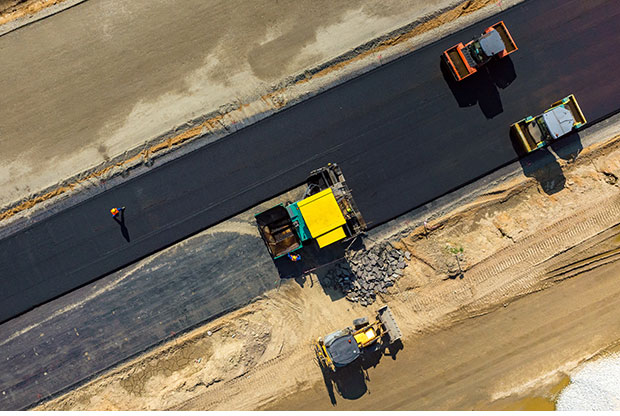Studies to bolster rural motorist safety, cut road building costs

Kunhee Choi.jpg
Researchers are learning how to reduce highway repavement costs and maximize rural highway safety in two multiyear research projects that include Kunhee Choi, Texas A&M associate professor of [construction science] (http://cosc.arch.tamu.edu) , and scientists from the [Texas A&M Transportation Institute] (https://tti.tamu.edu) .
In one project, Choi and TTI colleagues will use high-tech tools developed by TTI and the Texas Department of Transportation to evaluate road conditions in segments of four major highways scheduled for reconstruction and widening.
The tools include ground-penetrating radar technology that “sees” underground and produces a record of subsurface features without drilling, probing, digging, or coring.
After determining each roadway segment’s condition, Choi and his fellow researchers will teach engineers how integrating data from these tools can improve their highway surface designs, advise TxDOT on how to use the collected data to accelerate construction projects, fine tune the tools’ uses, and review current road construction methods.
The research team, which includes TTI’s Darlene Goehl, Charles Gurganus and Tom Scullion, will perform the TxDOT-funded $480,000 study in a three-year period.
In another study, Choi and a team of associates aim to determine an optimum configuration for rural passing lanes.
Although four-lane highways provide drivers with a continuous opportunity to pass a slowly moving vehicle, a two-way road with occasional passing lanes, aka a Super 2 Corridor, can be built and maintained for a greatly reduced cost.
The study will focus on two-way roads in rural areas facing increased demand, but without a traffic volume that justifies a four-lane alignment.
Choi will compare the conversion of a two-lane road to a four-lane highway and a Super 2 Corridor in a cost-benefit analysis supported by existing construction bid prices, as well as a comparison with TxDOT traffic statistics of the specific benefits that each widened configuration provides to drivers.
His colleagues will collect new field data of four-lane highways and Super 2 corridors and conduct additional study tasks.
Choi’s colleagues in TxDOT-funded $300,000, two-year study include TTI researchers Marcus Brewer, Tim Barrette, Gary Barricklow, Kay Fitzpatrick, David Florence and Steven Venglar.
Richard Nira
rnira@arch.tamu.edu
Tags
- archone gallery
- building a better texas
- coa gallery
- construction science
- cosc gallery
- interdisciplinary
- research
- rss
- transportation
Related Posts

Texas A&M researchers enabling buildings to ‘breathe’

Oct. 23 symposium spotlighted college, faculty research

Summit explored education advances with ‘smart’ cities

Students design building plans for Fort Worth school
Follow Us
Facebook Twitter Vimeo Youtube Flickr RSS
Recent Posts

Planning prof heads study of disaster housing aid

A message from the dean

Former student remembered as expert planner

Leading educator named new head of Architecture Dept.






_thumbnail_small.png)
